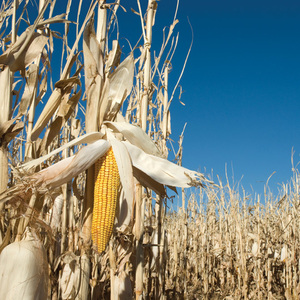USDA WASDE maintains forecast for corn use in ethanol

June 11, 2019
BY Erin Krueger
The USDA maintained its forecast that 5.5 million bushels of corn will go to ethanol production in the 2019-’20 crop year in its World Agricultural Supply and Demand Estimates report released June 11, up slightly from the 5.45 billion bushels of corn used to make ethanol in 2018-’19.
In the June WASDE, USA said the 2019-’20 corn outlook is for increased beginning stocks and imports, sharply lower production, reduced feed and residual use and exports, and smaller ending stocks.
Advertisement
Advertisement
Beginning stocks are up reflecting a 100-million-bushel decline in projected exports for 2018/19 to 2.2 billion bushels, based on current outstanding sales and reduced U.S. price competitiveness. Corn production for 2019-‘20 is forecast to decline 1.4 billion bushels to 13.7 billion, which if realized would be the lowest since 2015/16.
Unprecedented planting delays observed through early June are expected to prevent some plantings and reduce yield prospects.
With sharply lower supplies, use is projected to decline 425 million bushels to 14.3 billion, based on reductions to feed and residual use and exports. With supplies falling more than use, ending stocks are projected to decline 810 million bushels to 1.7 billion, which if realized would be the lowest since 2013-‘14. The season-average farm price is raised 50 cents to $3.80 per bushel.
Advertisement
Advertisement
Argentina corn production is raised on increased area with higher prices. Canada corn production is lowered on reductions to both area and yield with planting delays in Ontario. Russia corn production is higher based on government data indicating larger-than-expected planted area. For 2018-‘19, Brazil corn production is raised based on the latest government statistics.
Major global trade changes for 2019-‘20 include larger forecast corn exports for Argentina and Russia, with a partly offsetting reduction for Zambia. For 2018-‘19, exports are raised for Brazil and Argentina for the local marketing year beginning in March 2019 based on higher than-expected shipments during May. Foreign corn ending stocks are lowered from last month mostly reflecting reductions for Argentina, Brazil, Canada, and the EU.
Related Stories
The U.S. Energy Information Administration maintained its forecast for 2025 and 2026 biodiesel, renewable diesel and sustainable aviation fuel (SAF) production in its latest Short-Term Energy Outlook, released July 8.
XCF Global Inc. on July 10 shared its strategic plan to invest close to $1 billion in developing a network of SAF production facilities, expanding its U.S. footprint, and advancing its international growth strategy.
U.S. fuel ethanol capacity fell slightly in April, while biodiesel and renewable diesel capacity held steady, according to data released by the U.S. EIA on June 30. Feedstock consumption was down when compared to the previous month.
XCF Global Inc. on July 8 provided a production update on its flagship New Rise Reno facility, underscoring that the plant has successfully produced SAF, renewable diesel, and renewable naphtha during its initial ramp-up.
The U.S. EPA on July 8 hosted virtual public hearing to gather input on the agency’s recently released proposed rule to set 2026 and 2027 RFS RVOs. Members of the biofuel industry were among those to offer testimony during the event.
Upcoming Events










